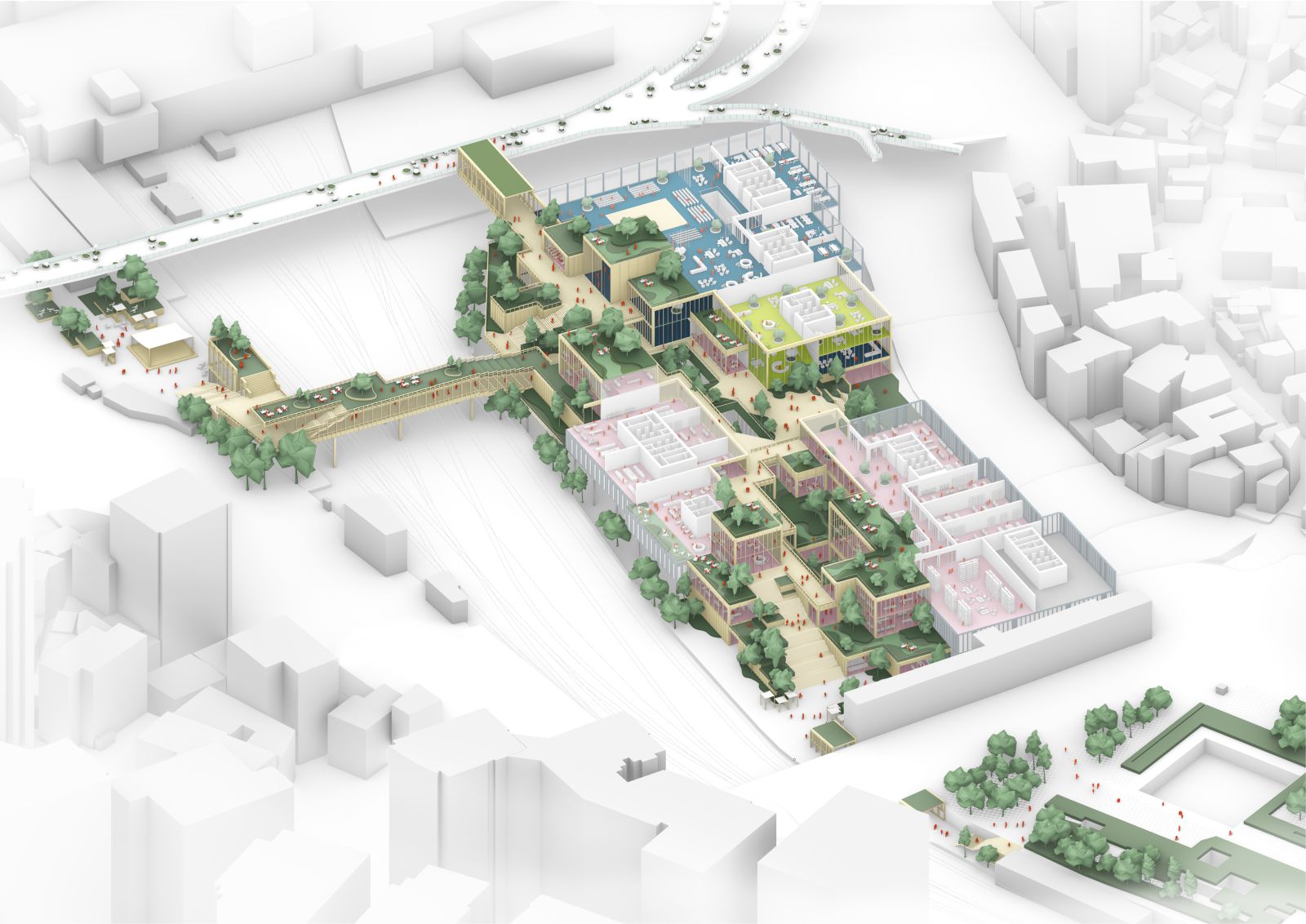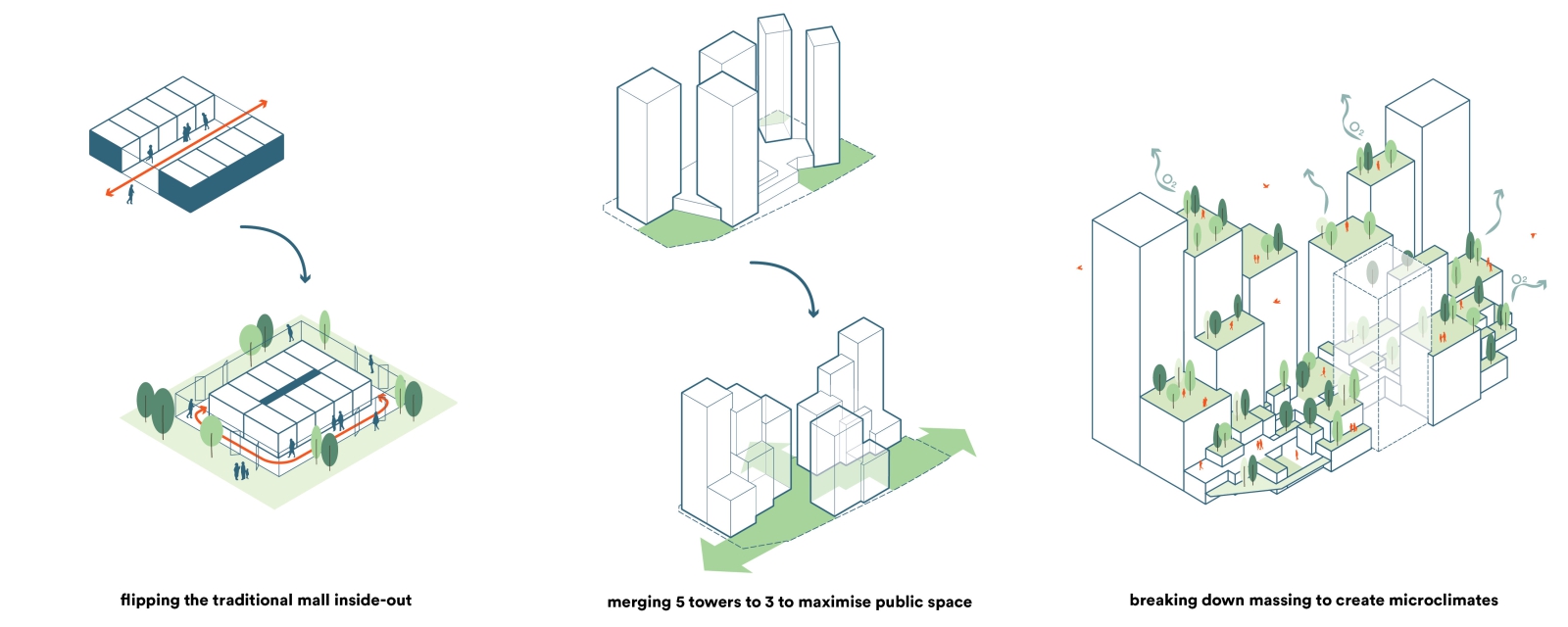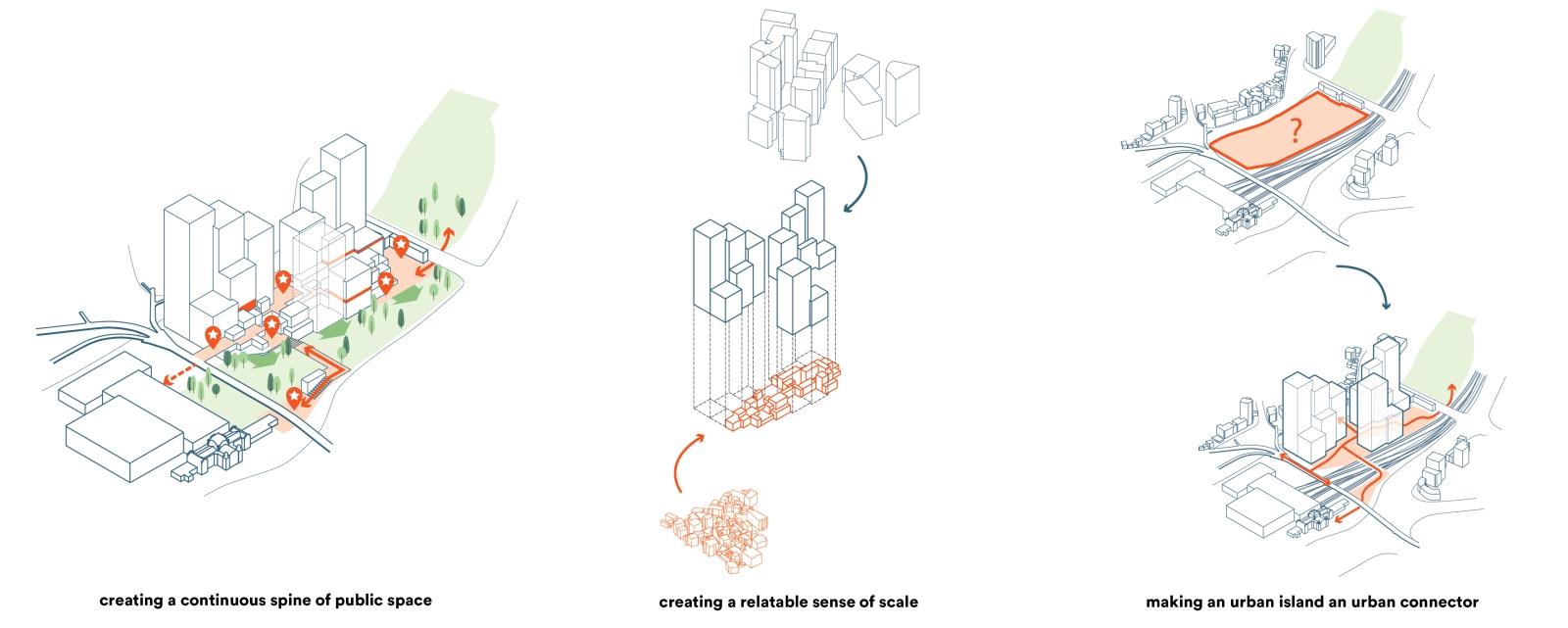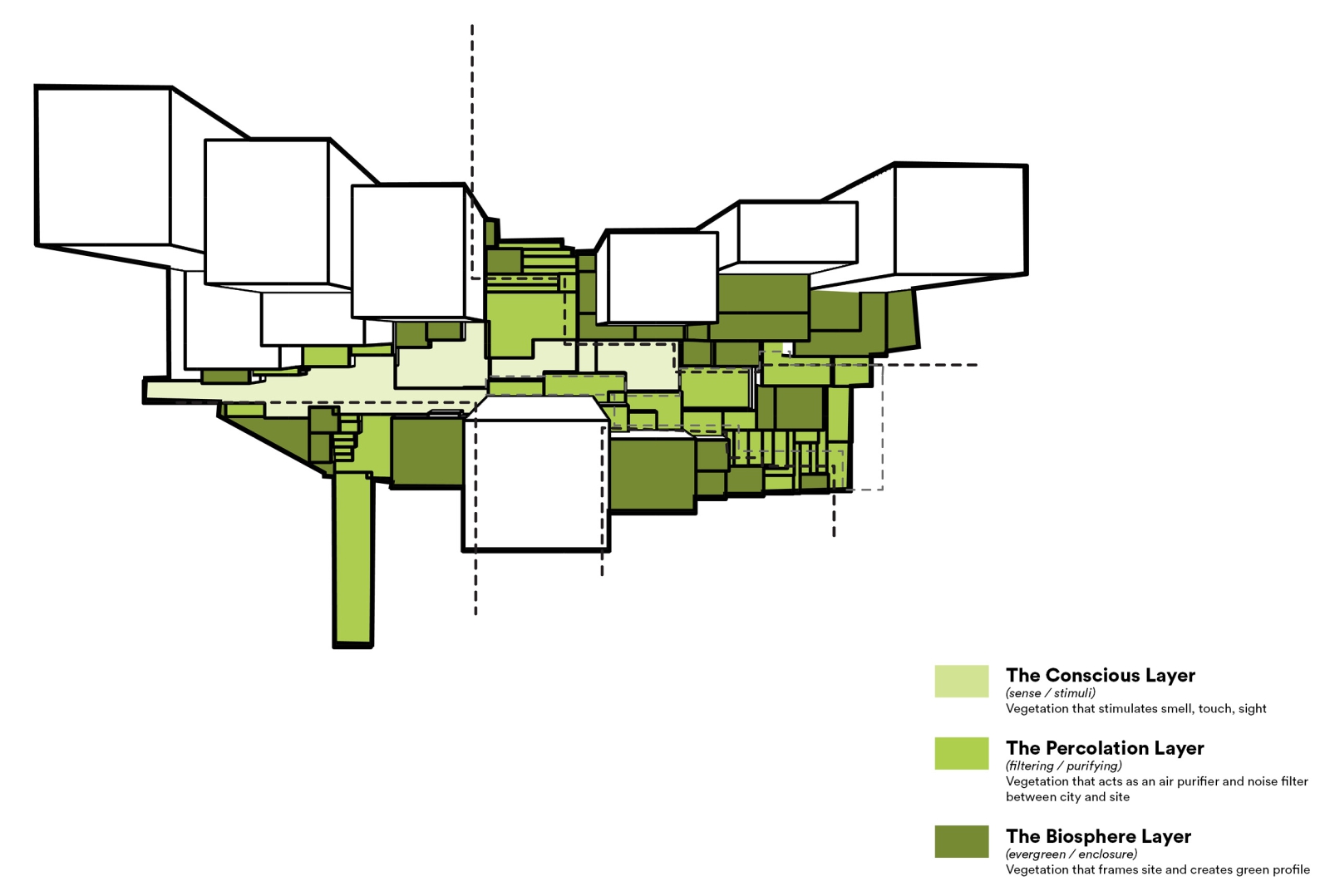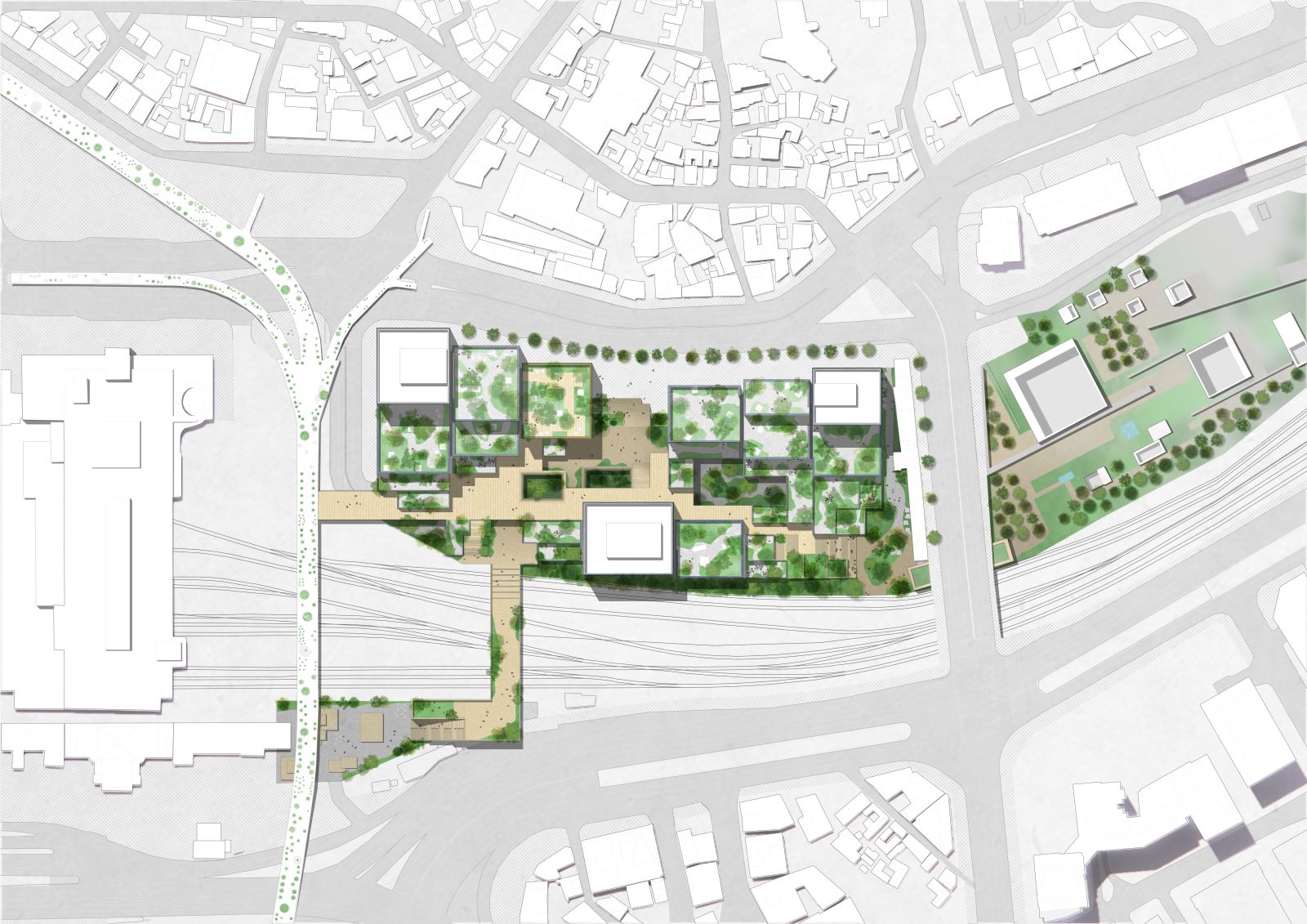Henning Larsen has been named the winner of Seoul Valley, a mixed-use urban development on the northern border of Yongsan-Gu, one of Seoul’s central districts. The 360,644 m² development, designed in collaboration with local architect Siaplan and retail consultant Benoy, combines office, retail, hotel, and residential program within a sprawling public podium.
“Seoul Valley is such an exciting project for central Seoul,” says Jacob Kurek, Henning Larsen partner in charge. “For well over a decade the city has been actively working to revitalize its urban fabric, focusing on the spaces between buildings and the pedestrian links. Seoul Valley fits into that vision, promising to bring public life back to the center not just through shops and amenities but through a design that focuses on public comfort, greenery, and local tradition.”
Seoul 2030
Ringed by mountains and characterized by a patchwork of hills and valleys, the geography of Seoul is largely uneven, save for a spine of level ground that runs through the city’s north-south axis. Seoul Valley is located in the flat center, sandwiched between the sprawling rail yards of Seoul Station and an 8-lane freeway leading to the city’s central Jung-gu District. Though centrally-located, infrastructural barriers have long isolated the long-empty 28,600 m² site from its surroundings.
Rapid urbanization in the 20th century transformed the heart of the ancient capital into a western style business-hub, largely losing the human-scale patchwork of traditional hanok villages and gardens. Seoul Valley merges the two scales, its three-pronged profile on the skyline fragmenting into numerous smaller masses as it descends. The ‘ground’ level is in fact spread over multiple, with gardens, terraces, and courtyards defining the spaces in between the structures.
“With Seoul Valley, we were interested in developing a scheme that merged the outsized scale of the city today with the small patchwork structures of its past,” says Kurek. “By dissolving the scale at the public levels, we not only make it feel more livable, but nod towards the beautiful structures of old Seoul. Our hope is for Seoul Valley to become a home to not just high end shops but also craftsmen and artisans.”
Seoul Valley’s ‘ground’ level is elevated, allowing pedestrians easy access into the project via a sprawling tribune stair on the north side and along the Seoul Skygarden park to the south. The public domain spans multiple floors and is linked by pocket parks and terraces. This meandering public path is framed on either side by shops, boutiques, and showrooms, in addition to workshops and studios.
Holis-Tech City
The office and hotel towers cluster around this leafy core, protecting pedestrians from wind, pollution, and urban noise. Plants are specifically chosen and arranged in overlapping layers to create a protected and appealing environment. The Biospheric Layer, which acts as a filtration boundary to mitigate pollution; the Percolation Layer, in which dense plantings block noise and form a lush green interior; and the Conscious Layer, which is geared towards stimulating the senses.
The massing results from extensive wind and climate studies, and is aimed at reducing heat buildup and prolonging the outdoor season. The attractive and comfortable green space at the heart of the city will be a magnet for those who wouldn’t normally spend their time in the center. Close proximity to the main station is convenient for both weary visitors headed to the hotel tower and for the workers heading to the office towers. Terraces on upper floors of these towers provide green sanctuary removed from the bustle of the city.
Refashioning Retail
Seoul Valley employs an ‘inside out’ retail scheme that prioritizes visitor experience over sheer commercial frontage. Rather than create maze-like double loaded corridors, retail modules are dispersed independently throughout the site. This, in combination with the comfortable microclimate within Seoul Valley, creates a free-flowing, ever-changing retail offering that encourages lingering and exploration. Even basement level retail and commercial offer (such as the hotel’s automobile entrance) has access to sunlight and lush greenery.
Seoul’s 2030 plan for urban development in the Korean capital sets ambitious goals: to establish a people oriented, culturally vibrant, historic, safe, and communal Seoul. Seoul Valley aims to meet these goals and then some, creating a comfortable and vibrant living room for locals and visitors, shoppers and workers, streamers and influencers alike. The project will enter the Schematic Design phase in the spring of 2021. Source and images Courtesy of Henning Larsen.








